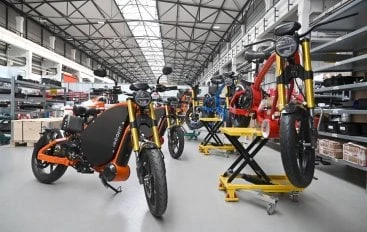The two-wheeler industry in India looks at an upswing in the next financial year (FY25). As CareEdge Ratings points out in the most recent report, it is anticipated that volume growth will stand between 7% and 9%, which is below the spectacular 9.8% recorded in FY24. That is why it is high time to look more closely at the drivers of this tendency and its implications for the industry.
Electric Vehicle (EV) Sales and New Model Launch
The trend toward clean mobility is resulting in growing demand for electric two-wheelers. The addition of new models to the existing line of vehicles is likely to encourage consumers to switch to electric vehicles through the Electric Mobility Promotion Scheme 2024. This may be because there is a lot of demand for new and fresh models to come to the market. This is mainly because the manufacturers are coming up with new designs and features of the product to entice the buyers.
Interest Rate Cuts and Export Recovery
A predicted decrease in interest rates in the second half of FY25 could help boost consumer demand and increase expenditure. The industry aims to get back from the export decline identified in the FY24 period. Higher exports may supplement overall sales numbers. Better monsoons and better rural customer attitudes may pull up sales volumes.
Historical Facts
For two-wheelers, the record sales volume in the Indian automobile industry was observed in FY19, and the annual sales recorded were 24.46 million units. However, there was a decline in FY24, where the total sales volume was 21.43 million units. The decline was on the back of factors such as increased vehicle prices because of BS-VI norms, higher rates of interest, and rural income pressures.
Nevertheless, the outlook of this industry appeared to be optimistic in the second half of FY24 due to festive season demand and positive sentiment in the rural markets. Double-digit volume grew through to the next FY25 implying growth and flexibility.
Ways Manufactures can boost sales in FY25
Several options available to meet customers’ needs, such as electric scooters and bikes, should be provided. Practice competitive pricing to be able to sustain the market. Promotional techniques such as time-sensitive price reductions, product swaps, and credit schemes are useful for attracting the price-sensitive consumer. Promote your products using good marketing strategies. Emphasize your competitive advantages or Unique Selling Propositions (USPs). Use social media, influencers, and partnerships to build the brand’s image. Satisfy the customer needs by offering quality after-sales service. A happy customer is likely to endorse your brand and make future purchases.
Establish new dealerships at prime locations. There is an effective way of supplying the market to meet demand as soon as possible. Cultivate digital mediums for selling and customer interactions. Create more accessible websites, mobile applications, and online reservation systems. Make it easier for customers to finance their purchases by negotiating with banks and NBFCs for the best deals. Availability of credit can stimulate demand.
Conclusion
Even though the growth rate in FY25 may be slightly lower, the industry remains sufficiently flexible to respond to changes. The growth in the sales of existing EVs and the introduction of new models in the market indicate that this particular segment of two-wheelers has a promising future ahead of it.

Note: You can reach us at support@scoopearth.com with any further queries.
Linkedin Page : https://www.linkedin.com/company/scoopearth-com/













